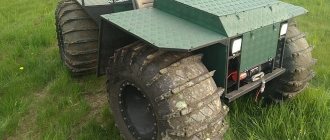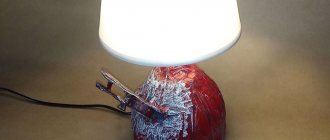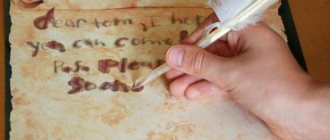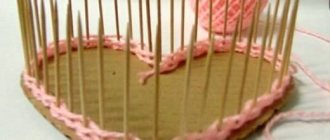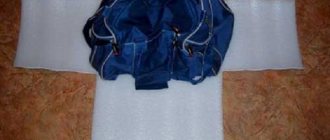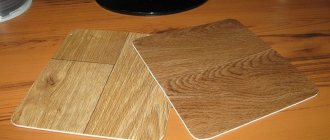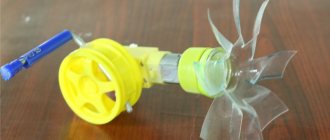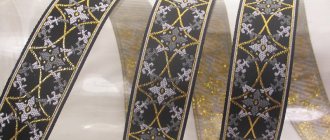Sasha asked a question:
I decided to lay the tiles in the kitchen myself, but I don’t want to spend extra money. At home there is a bag of cement left over from filling a hole in the garage. Please tell me how to make tile adhesive with your own hands so that it is no worse than the adhesive mixture from the store.
Tiler's answer:
Anyone who has planned a home renovation is trying to save on building materials and prepare an adhesive mixture for tiles with their own hands. I will tell you a recipe that I myself have repeatedly used for laying tiles.
In order to prepare tile adhesive you will need: a mixing container, a construction mixer, cement grades M-400 or M-500, sand, and plasticizers. I use PVA glue as plasticizers, but you can also use CMC wallpaper glue, washing powder, liquid soap or detergent.
Homemade tile adhesive
Homemade adhesives are still produced today, with a huge selection of various chemical compounds for attaching tile products from different materials with different weights.
This is caused by the need to use existing houses, previously purchased and unused building materials. You can make tile adhesive yourself to save money.
The result will be no worse than when using expensive mixtures, if we are talking about ordinary wall tiles of a standard size for interior decoration.
If you need to attach tiles (to the ceiling, drywall), or heavier porcelain tiles, you shouldn’t skimp on glue. Such materials were not used before.
Special glue is needed in rooms with high humidity and significant temperature changes (for example, a bathroom).
External finishing work requires frost-resistant, water-repellent mixtures that can also withstand strong temperature changes. There are special products for such conditions, and they need to be used.
Supplements
When making an adhesive solution for tiles, in addition to (or instead of) PVA, CMC and detergents, you can add special additives such as: MasterTherm, superplasticizer - C3, liquid glass, dibutyl phthalate, resin additive DEG1, superplasticizer D5, etc.
They will give the glue such unique properties as: frost resistance, heat resistance, moisture resistance, resistance to chemicals, plasticity, increased adhesion, etc. The method of using these additives will be described in the instructions supplied by the manufacturer.
And finally. To understand whether the adhesive composition prepared by yourself is ready for use, it must be applied to the tile, and if the tile moves freely along the floor in any direction, then the adhesive can be considered ready.
Features of modern tile adhesive compositions
However, there are different situations. During repairs, many people face financial problems, since not always everything can be foreseen in advance:
- The price of building materials is rising,
- Errors are allowed in calculating what is needed,
- Unforeseen expenses arise due to breakdowns,
- Hidden defects that need to be eliminated.
All this leads to the fact that there is not enough money or time to buy new equipment, but work needs to be done. Sometimes this is beneficial, strength and knowledge are mobilized and available means are used. This saves space (since they no longer need to be stored), time and money.
Homemade adhesive can be quite high quality. When making it, it is important to strictly observe the required proportions, work quickly, and prepare everything possible in advance to avoid premature hardening of the mixture.
How long does it take to dry?
The question of how long it takes for plaster to dry is multifaceted and depends on several factors:
- layer thickness;
- materials used;
- microclimate conditions indoors or outdoors (temperature, humidity, etc.)
On average, it is believed that one millimeter of layer dries completely in one day, under ideal conditions. Depending on the above factors, the drying period can range from three days to a week or even more.
Plastering walls is an integral part of construction and most renovation work. Properly selected mixtures, subject to application technology, give long-lasting results.
How to choose the best tile adhesive composition
The most common "homemade" tile adhesive can be prepared with:
- By adding PVA (polyvinyl acetate) or wallpaper glue based on CMC (carboxymethylcellulose);
- Liquid soap or washing powder;
- Paints.
In all cases, the above products are added to a mixture of cement and sand, in which one part cement and three sands (1:3). It is important to create a well-mixed substance with the consistency of thick sour cream.
When adding PVA, the glue must be diluted with water in a ratio of 2:1 - add one part of water to two parts of PVA. This compound is gradually poured into a pre-prepared container with dry cement and sand, stirring thoroughly.
When using liquid soap, you also need to prepare a solution: use 50 to 100 g of liquid soap per bucket of water. More than 100 grams of soap should not be dissolved, as efflorescence may form.
Carefully, stirring constantly, pour the resulting liquid into a container with a mixture of sand and cement, diluting it to the consistency of thick sour cream.
- You can add old, but still intact, paint to the mixture of sand and cement.
- You will have to be careful when working with paint-based glue.
- If it does not match the color of the tile, the tile must be laid without joints, avoiding paint showing through.
- Also, the work must be done quickly, avoiding premature hardening of the adhesive. The paint-based glue will be quite strong.
- In most cases, oil paint is used, but enamel is also acceptable.
- The latter dries out faster. This must be taken into account during work and speed it up as much as possible.
Using such simple recipes, you can make your own tile adhesive for laying tiles, saving money, as well as using unnecessary materials available at home, which would soon lose their qualities and would have to be thrown away.
Preparation of mastics
Diagram of a brick kiln.
Bitumen-latex mastic. Construction bitumen must be melted to a temperature of 160°C, then limestone flour is added to it and mixed. The resulting mass must be cooled to 70°C and a solution of latex and gasoline must be added to it and mixed thoroughly. You can use the mastic after it reaches room temperature. The percentage composition of the mastic is: construction bitumen - 49%, limestone flour - 24%, latex - 6%, gasoline - 21%.
Bitumen-turpentine mastic. The bitumen needs to be melted and Portland cement M500 added to it, mixed thoroughly until a homogeneous consistency is obtained. Cool to 70°C and add a mixture of latex, white spirit and turpentine, stirring carefully. The mastic is ready. Percentage composition of ingredients: construction bitumen - 65%, Portland cement - 5%, white spirit - 17%, turpentine - 8%, latex - 5%.
Required qualities of tile adhesive
Ceramic tiles are quite heavy items. The glue for it must be good at gluing surfaces, which are often completely heterogeneous. In most cases they are vertical, which makes the work more difficult.
- The glue must have high adhesion, that is, quickly bond two surfaces.
- Tiles with high-quality adhesive do not move or fall.
- It has low fluidity and is resistant to slipping: the tile remains in the place where it was attached, there are no unwanted displacements.
The glue provides elasticity if it adheres well to the surfaces being glued. It should not dry out for a reasonable period of time so that slightly misaligned tiles can be straightened.
Sometimes you need to quickly spread a little more glue to finish the job. At the same time, it should be possible to correct the tiles laid last, which may slide slightly.
Where is paste used?
The scope of its use is known to everyone. Thus, it is used to make crafts from papier-mâché and is widely used in handicrafts, repair work and for other tasks.
Unlike store-bought glue, it is environmentally friendly, completely non-toxic, which means its use does not cause the slightest harm to human health. Let's look in more detail at how to make paste from flour.
Profitable use of existing materials
Preparing tile adhesive is simple; it is only important to carefully observe the required proportions. As a result, you will be able to get the job done while saving money.
Making your own adhesive is also beneficial in cases where the tiles need to be installed on a not very flat surface. It is known that there is a thick-layer cement adhesive and a thin-layer one.
Thick-layer is also used to level the surface under the tiles. Its consumption is greater, so it is more profitable to dilute it from existing materials.
Knowing how to make your own tile adhesive is useful. This powerful product can be used for cosmetic repairs of premises, as well as for gluing other objects, without turning to specialists for help. At a small cost, everything in the house will remain beautiful and well-groomed.
Production of PVA
The glue is a white, water-based liquid. Depending on their purpose, the composition includes various components. PVA tolerates freezing well, and after defrosting it restores its original properties.
To make PVA glue at home you will need:
- Water (0.5 l)
- Photographic gelatin (2.5 grams)
- Wheat flour (50 grams)
- Glycerin (2 grams)
- Ethyl alcohol (10 mg)
Gelatin is added to water and left for a day to swell. Further preparation is carried out in a water bath.
A container with water and swollen gelatin is placed in a water bath, and flour is added.
The resulting mixture must be boiled, stirring constantly. As a result, you will get a composition reminiscent of sour cream in thickness.
After this, the container is removed from the heat and glycerin and alcohol are added. This is the easiest way to make PVA glue.
Photo of the best tile adhesive
Advantages of using paste
The main advantage of the paste is its base. Unlike factory glue, the paste consists of environmentally friendly materials that do not have any negative impact on human health, therefore it is not positioned as an allergen and does not cause irritation. Moreover, even its smell is harmless. The advantages of the paste include the fact that it is positioned as a universal product, the use of which is suitable for a wide variety of areas. Starch paste has a fairly low cost, which is also its undeniable advantage. This is especially noticeable when you need to use fairly large supplies of glue.
Glue made from flour and water or starch will stick paper wallpaper much stronger and better than store-bought glue specially designed for it. Surprisingly, restoration done with paste will last much longer without the slightest defect. This statement can be verified quite simply. It is enough to pay attention to the Soviet repairs that last for decades. Few people thought that due to the lack of the slightest offer for store-bought specialized adhesives, wallpaper on walls and ceilings in those days was glued using paste.
It is also worth noting that in the past, in the absence of energy-saving films and other special accessories that are generally available in our time, the paste served as the basis for tapes that were used to seal windows in the cold season.
The paste you prepare yourself does not leave any marks on the surface. It is made from universal materials that work well with most types of paper-based wallpaper. In addition, such an adhesive solution perfectly holds wall coverings with increased density, because it is characterized by the highest adhesive properties.
However, you can also find disadvantages with the paste. For example, a paste made from flour will not withstand a flood. If your upstairs neighbors flood your apartment, you will most likely have to deal with peeling wallpaper. However, you can play it safe by thinking more carefully about how to cook a paste with the necessary properties.
Sulfur vulcanization of rubber
After rubber vulcanization
This operation consists of a chemical reaction in which sulfur atoms are attached to the rubber. When added up to 5%, raw materials are obtained for the manufacture of tubes and tires. When two elements come together, sulfur helps connect the rubber molecules, forming what is called a bridge. This procedure is a hot method, but it is unlikely to be performed during a hike or on the highway.
Stamps
The following brands of glue can be used to tightly glue rubber to rubber:
- U425-3 is made on the basis of rubber with the addition of nefras and ethyl acetate, used for gluing with subsequent vulcanization of the material.
- 4NB-UV is a one-component, oil- and water-resistant adhesive, operating temperature range is from –40 to +60° C. It can be used for rubber vulcanization at +180° C. It is used for connecting surfaces of nitrile, natural, chloroprene rubber, and rubber-fabric materials , shoe repair and manufacturing, agricultural machinery production.
- Rubber adhesive 4508 has increased stickiness and water resistance, and forms an elastic seam. It is used in the production of rubber products, rubberized fabrics, and suits intended for special protection. The best composition for repairing PVC boats, fishing suits and leather goods.
Rubber glue 4508
You can make a good tool for gluing various rubber products with your own hands:
- Grind the soft rubber into small pieces and fill it with aviation (clean) gasoline.
- Leave the mixture to infuse for several days, after which filter the resulting mass.
- Let the mixture sit for a few more days in a warm place.
Cold vulcanization
Nowadays, using this method is not difficult, since the repair kit can be purchased at any auto or bicycle parts store. The contents of such a kit may vary, but each one contains special patches and glue.
Cold vulcanization of rubber
The repair procedure in this case is similar to the hot method. It is also necessary to abrade the damaged surface, remove rubber dust and degrease. After drying, apply glue to the camera and stick the patch. In this case, it is not the duration of the press that plays a role, but its strength. Therefore, simply pressing with a stone will not be enough; more effort will be required.
Do-it-yourself cold vulcanization of rubber is a fairly simple process that can be carried out wherever you are if you have a special kit. However, homemade raw chewing gum is not homemade. For such work, special equipment is required.
An adhesive that is made for tiles made from tile and ceramic materials
It is quite possible to prepare the tile mortar yourself. At the same time, it will be possible to glue the facing surface onto it without fear.
This mixture should include:
In order to glue the tile, you need to turn it over with its back side. Consequently, foam is placed at the corners of the tiles and acetone is dripped onto each edge. Further, the tile composition tends to set on its own. This process occurs after a few seconds, due to the fact that the foam dissolves under the influence of the substances used. Thus, the resulting solution tightly adheres the tiles to the wall.
The technology for preparing a solution for gluing walls with ceramic tiles requires the same components as for tiles. But here it is necessary to prepare a special solution, which will have a ratio of 1:4 by volume. For more plastic properties of the solution, lime should be added to its composition. It should be no more than 1/5 of the total volume.
Note! It is strictly forbidden to add gypsum to the cement mortar, because the mixture will lose all its adhesive properties and the tile cladding will not adhere to the wall or floor.
For foam plastic
Not every glue is suitable for gluing foam plastic. To make it yourself, you need to take slaked lime and cottage cheese in equal quantities. The ingredients are mixed until smooth. The mixture hardens quickly and should be prepared before use.
Reference! The special glue for polystyrene foam can be replaced with the carpentry glue described above.
Self-made foam adhesive should not contain harmful components:
- Solvents based on acetone.
- Gasoline, kerosene, white alcohol.
- Esters and alcohols.
- Flammable components.
- Chlorine derivatives.
Concept of vulcanization
Vulcanization is a chemical process during which raw rubber, improving the strength and elasticity properties of the material, becomes rubber. Essentially, rubber can be used as a special adhesive to seal a punctured tube or tire. Rubber vulcanization processes are as follows:
- electric;
- sulfuric;
- spicy;
- Cold.
Epoxy
To prepare an epoxy adhesive, you will need a modified resin with a hardener. If the mixture is required for construction purposes, other components, for example, aluminum powder, can be added.
The key point will be to maintain proportions, because the final result will depend on this. An insufficient amount of solvent, as well as its excess, will affect properties such as resistance to moisture and temperatures, and strength. A low concentration of hardener will make the composition sticky and it simply will not be able to harden.
Reference! When starting to prepare, you need to look at the instructions for each component. Most often, the proportion of hardener and resin is 1:10, but the value may be different.
The production of the adhesive mixture is carried out by thoroughly mixing the components in the required proportions. This must be done before the upcoming work. After mixing, the mixture must be placed in a warm liquid. Additional ingredients are added after mixing. The result is a fluid mass that is easy to apply to different surfaces.
When the composition is ready, it is applied to the base in a thin layer. It takes about 24 hours to dry. Excess mixture should be removed immediately after application.
Features of applying epoxy glue:
- To improve adhesion, you need to clean and degrease the surface.
- Drying best occurs at a temperature of 20 degrees.
- When applying a couple of layers, the previous one needs to be still sticky.
Epoxy composition is considered the most versatile. It can be used for a variety of purposes, from shoe repair to heavy industry.
Electrical vulcanization of rubber
Basically, vulcanization can be hot or cold. Electrovulcanization is a hot process. An electric stove with a ceramic heater is used as a house heater; a hair dryer or a regular iron is also suitable. The optimal temperature for this method is about 145 ° C. You can also use available tools to determine the temperature, for example, if a piece of paper begins to char, this means that the temperature has reached the required values.
Electrical vulcanization of rubber
There are also special clamps with heating elements. Such devices can operate from a 220 V home network, from a car battery, through a cigarette lighter socket, or from their own battery. It all depends on the performance of each device. These clips are easy to use; you simply attach a rubber pad to the camera, secure it, and connect it.
Basic rules at work
So that the rules do not look like general recommendations, let us take as an example adhesive compositions containing cement. In order for the composition to set properly and also retain all its properties on the surface, the following nuances must be observed:
- the room must have an acceptable temperature for work . To stick the tiles, it must be in the range of 5 to 30 degrees Celsius;
- It is necessary to maintain the correct amount of water when diluting the glue. On average, to obtain a normal consistency you will need about five liters of water per 25 kg bag;
- You need to apply the correct amount of compound to the tiles. As a rule, 3-15 mm of glue is applied;
- The average lifespan of glue, so to speak, is 3-4 hours. At the same time, after gluing the tile to the surface, we will still have about 10 minutes to adjust the position of the tile;
- As for the hardening time, it is about 24 hours , after which you can safely walk on the tiles or perform any other manipulations.
